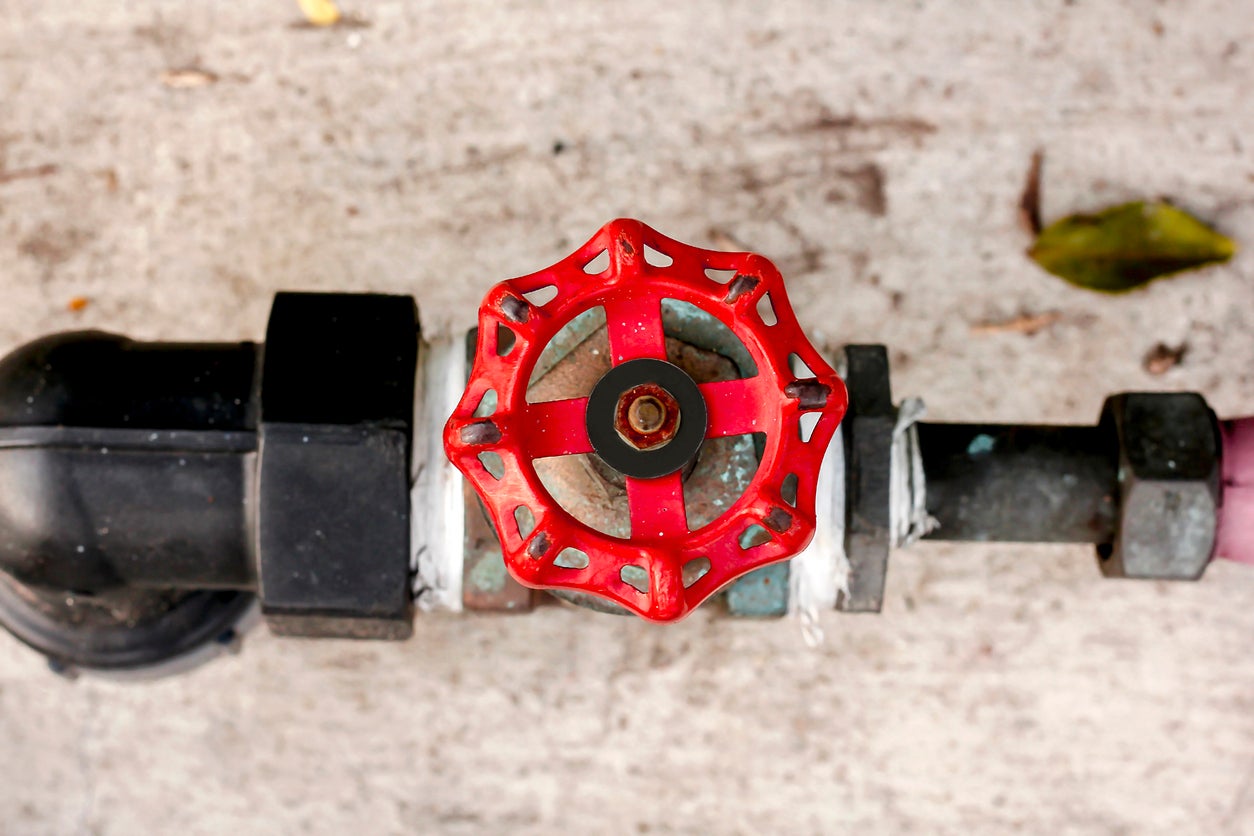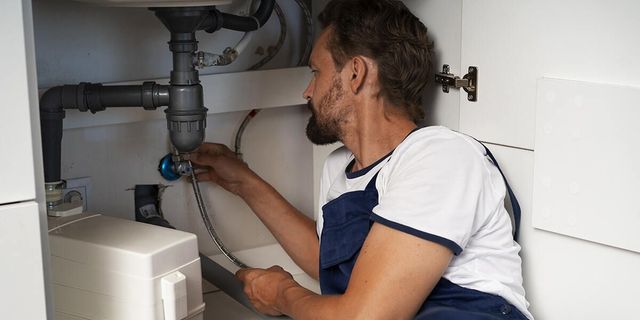Efficient Remedies for Tackling Low Water Pressure in Your Home
Efficient Remedies for Tackling Low Water Pressure in Your Home
Blog Article
We've encountered this post involving 4 Ways to Troubleshoot Low Water Pressure listed below on the internet and felt it made good sense to write about it with you here.

Low tide stress in your house can be a frustrating issue, affecting whatever from bathing to cleaning meals. If you're experiencing weak water circulation, there are several possible reasons and solutions to explore. In this guide, we'll discuss usual factors for low water pressure and functional actions to address the problem effectively.
Introduction to Low Water Stress
Low tide stress occurs when the circulation of water from your taps, showers, and other fixtures is weaker than common. This can make day-to-day tasks extra challenging and less effective. Understanding the root causes of low tide pressure is critical to discovering the best service.
Usual Sources Of Low Water Pressure
Faulty Pressure Regulatory Authorities
Stress regulators are accountable for keeping consistent water stress in your house. If they malfunction, it can cause low water pressure or uneven flow throughout your house.
Municipal Water Supply Issues
Occasionally, the trouble lies outside your home. Local water issues, such as main line leakages or upkeep work, can temporarily decrease water stress in your location.
Pipe Obstructions
In time, pipelines can become clogged with natural resource, sediment, or particles, restricting the circulation of water. This is a common issue in older homes with galvanized steel pipelines.
Rust
Deterioration within pipelines can lead to leakages and reduced water pressure. Corrosion buildup can restrict water flow, specifically in aging plumbing systems.
Exactly How to Identify Low Tide Stress
Inspecting Pipelines
Examine noticeable pipelines for indications of leakages, rust, or clogs. Take notice of any unusual audios, such as knocking or rattling pipes, which could suggest concerns within the plumbing system.
Consulting with a Plumber
If you're incapable to determine the reason for low water stress, take into consideration hiring an expert plumber to carry out a complete evaluation. They can identify underlying concerns and suggest proper options.
Checking Taps and Fixtures
Begin by checking the water pressure at different taps and fixtures throughout your home. If the issue is separated to certain locations, it may indicate local problems.
DIY Solutions to Take Care Of Low Tide Stress
Flushing Hot Water Heater
Debris accumulation in the water heater can limit circulation and reduce effectiveness. Purging the container occasionally helps get rid of sediment and keep optimum performance.
Inspecting Pressure Regulator
Make certain that the pressure regulatory authority is working appropriately. Readjusting or changing the regulatory authority can assist bring back proper water stress throughout your home.
Cleaning Aerators and Showerheads
Mineral deposits can build up in aerators and showerheads, reducing water circulation. Get rid of and clean up these elements routinely to improve water stress.
Cleaning Clogs in Water Lines
For minor clogs, attempt making use of a plumbing serpent or chemical drain cleaner to clear blockages in pipes. Be cautious when using chemicals and follow security guidelines.
When to Call a Specialist Plumber
If do it yourself efforts stop working to resolve the issue or if you presume significant plumbing problems, it's ideal to seek aid from an accredited plumber. They have the experience and tools to address complex issues securely and properly.
Safety Nets to Maintain Water Pressure
Installing a Pressure Booster
Think about setting up a stress booster pump to boost water pressure in areas with regularly low flow. This can be specifically helpful for multi-story homes or residential properties with high-demand fixtures.
Monitoring Water Use
Bear in mind water use practices and prevent overtaxing the plumbing system. Simple changes, such as staggering showers and laundry lots, can aid preserve sufficient water stress.
Normal Maintenance
Schedule regular maintenance for your plumbing system to prevent issues such as rust, leakages, and blockages. Attending to minor troubles early can help avoid more considerable fixings later.
Final thought
Handling low tide pressure can be frustrating, but recognizing the underlying causes and applying appropriate options can recover ideal flow throughout your home. Whether it's cleansing aerators, checking pipes, or speaking with a plumber, taking positive steps can make sure a constant supply of water for your everyday demands.
9 Solutions to Low Water Pressure
If you have ever struggled to rinse the shampoo out of your hair, washed your hands under a trickle of water, or been forced to wait for your washing machine to complete a cycle, then you have experienced the nuisance of low water pressure. Low water pressure can turn a simple task into a hassle, but once you identify the cause, either the necessary plumbing fix or a water booster pump can drastically improve your water pressure. In this article, you can learn about nine common causes of low water pressure and how to resolve low water pressure in your home.
How do you know if you have low water pressure?
Testing your home’s water with a pressure gauge is the easiest way to find out if you have low water pressure. Pressure gauges are simple and inexpensive, and once installed, will allow you to check your water pressure with a quick glance.
If your water is from a municipal water supply, select an outdoor faucet near where the main water line enters your home. If your water is from a well, select a faucet that is close to the well’s pressure tank. Attach the pressure gauge to the faucet and tighten it. To get an accurate reading, make sure water isn’t being used anywhere else inside or outside the house, and then fully turn the faucet on. Once the faucet is on, you can read the water pressure on the gauge’s dial. Typical home water pressure should be between 40 and 50 psi, so if the dial reads less than 40 psi, you have low water pressure.
Do water booster pumps increase water pressure?
A water booster pump is a centrifugal pump that improves low water pressure and increases water flow. Much like how a fan’s blades create a gust of air, a water booster pump’s rotating impeller draws water in and then pushes it out with increased force. This force raises the water pressure in a system. A water booster pump is installed where the main water line enters your home, so water pressure is improved in every tap and appliance.
What causes low water pressure?
1. Hard water
If you have hard water, scale can accumulate in your pipes, restrict the water flow, and reduce your water pressure. Hard water has a high mineral content, specifically calcium and magnesium, and scale is formed when these mineral salts dissolve.
The solution: When scale buildup is severe enough to restrict water flow and reduce water pressure, the best solution is to replace your pipes. Products like CLR Calcium, Lime, and Rust remover can diminish scale, but as the scale comes off it may clog your pipes, creating another costly plumbing problem. Not to mention, it is never a good idea to put harsh chemicals in the pipes that supply your drinking water. To prevent scale in the future, we recommend installing a water softener.
The main water shut off valve is not open.
If your water pressure has suddenly decreased and you recently had a repair done, make sure the main water shut off valve is fully open. Most plumbing repairs require the water to be shut off, but if the valve is not completely opened afterward, your water pressure will be restricted.
The solution: Locate your main shut off valve, which is installed where the main water line enters your home, and fully open it by turning it counterclockwise.
A municipal water problem
Low water pressure may not have to do with your own plumbing system. Just like your home’s water supply, the municipal water supply is subject to problems that can cause low water pressure, such as leaks and corrosion.
The solution: Call the municipal water supply to report your low water pressure. Your input may alert them to the problem and will ensure your water pressure is restored as quickly as possible.
Faulty pressure regulator
A pressure regulator is a valve that reduces incoming water pressure as water flows into your home from the main service line. High water pressure can damage pipes and plumbing fixtures, so a pressure regulator is installed to protect your home plumbing system. Most are set to 50 pounds per square inch (psi), but if yours is set lower, your water pressure will feel low. If your pressure regulator is set to 50 psi but your pressure still feels low, it may be broken or clogged.
The solution: Adjust your pressure regulator’s setting to 50 psi if it is currently set lower. If your pressure regulator is faulty, ask a plumber to replace it.
A leak
A leak can reduce water flow and water pressure. To determine if you have a leak, turn all the faucets off inside and outside of your home. About an hour later, check your water meter. If it indicates you are using water, you have a leak.
The solution: Enlist the help of a licensed plumber to locate and repair the leak. Once the repairs are complete, your water pressure should return to normal.
https://www.freshwatersystems.com/blogs/blog/what-causes-low-water-pressure-and-how-to-improve-it

As a person who reads on Dealing with Low Water Pressure in Your Home, I imagined sharing that excerpt was a good idea. Make sure you pause to promote this blog if you appreciated it. I enjoy your readership.
Or Book Technician Here Report this page